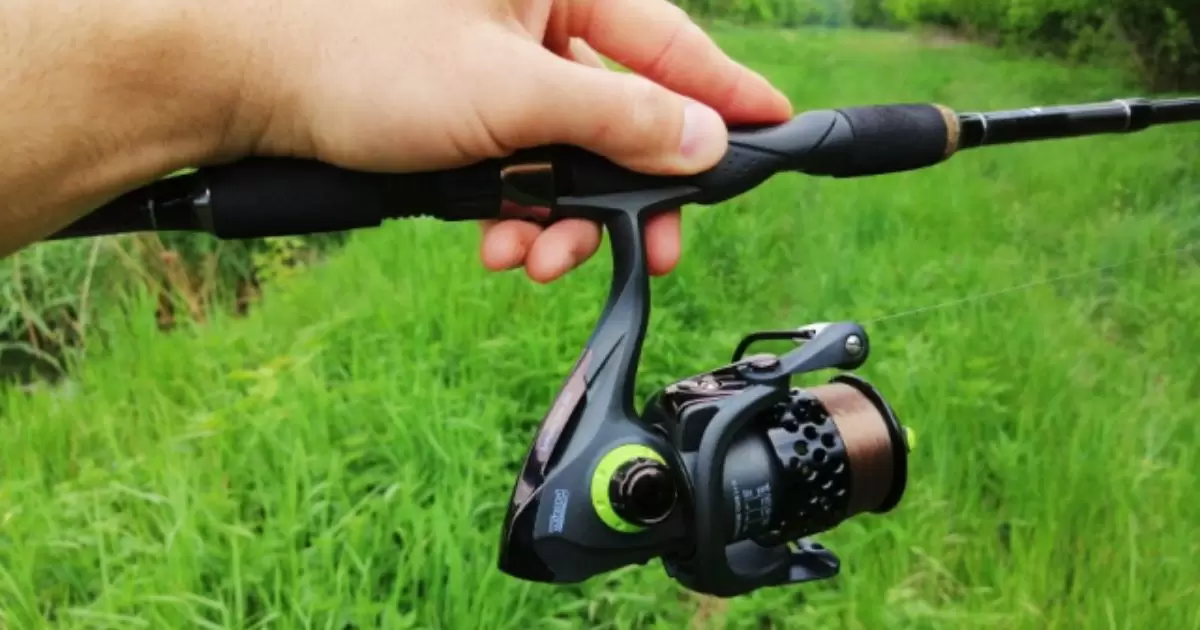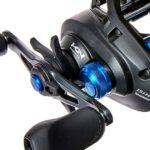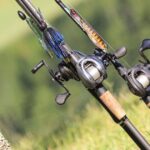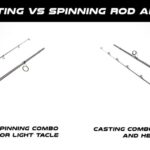A baitcaster line refers to the fishing line used in conjunction with a baitcasting reel. This specialized reel is commonly employed by anglers for its precision and control in casting and retrieving lures.
In the world of fishing, the baitcaster line plays a crucial role. But have you ever wondered, in the midst of the excitement, how much line does a baitcaster hold? Let’s unravel this mystery and dive into the specifics that make baitcasters an angler’s choice.
The amount of line a baitcaster can hold varies, influencing its suitability for different fishing scenarios. Baitcasting reels typically accommodate a range of line capacities, measured in yards or meters.
Understanding Baitcaster Line Capacity
Baitcaster line capacity is the amount of fishing line a baitcasting reel can hold. This capacity varies based on the reel’s design and intended use. Anglers need to grasp this concept to choose the right baitcaster for their fishing preferences.
Why is it crucial? Well, the proper understanding of baitcaster line capacity ensures that you have enough line for effective casting while avoiding overcapacity issues. Finding the balance is key to optimizing your baitcaster’s performance and enhancing your overall fishing experience.
Why is Baitcaster Line Length Crucial for Anglers?
The length of a baitcaster line is crucial for anglers due to its impact on casting accuracy. With the right line length, anglers can achieve precise casts, reaching their desired fishing spots effortlessly. It directly influences the control an angler has over the bait, enhancing the overall fishing experience.
The baitcaster line length is vital for accurately targeting specific areas in the water where fish are likely to be. Whether casting into cover or reaching distant points, having the correct line length ensures the bait lands where it’s intended. Anglers value this precision as it increases the likelihood of attracting and hooking their target species.
How Much Line Do You Need?
Choosing the right baitcaster is crucial for successful fishing. When considering how much line you need, match it to your preferred fishing style and target species. A baitcaster with optimal line capacity ensures efficient casting and retrieval, enhancing your overall angling experience.
Different fishing styles demand varying line lengths. Whether you prefer finesse fishing or tackling larger species, selecting a baitcaster with the right line capacity is essential. Finding the balance between having enough line for casting distance and avoiding overcapacity issues will contribute to a smoother and more effective fishing venture.
Exploring Baitcaster Line Options: Monofilament, Fluorocarbon, and Braided
When considering baitcaster line options, anglers often encounter three primary choices: monofilament, fluorocarbon, and braided lines. Monofilament, known for its versatility, offers easy manageability and is a popular choice for various fishing styles.
Fluorocarbon, on the other hand, boasts low visibility underwater, making it an excellent option for clear waters and finicky fish. Braided lines, with their exceptional strength and sensitivity, are a favorite among anglers seeking robust performance.
Each option caters to specific preferences and fishing conditions, providing anglers the flexibility to choose the line that aligns best with their fishing style and the targeted species. The diversity in baitcaster line options ensures that anglers can adapt to different scenarios and optimize their chances of a successful catch.
Factors Affecting Baitcaster Line Capacity
Baitcaster reel design is a key factor influencing line capacity. Compact reels often hold less line, while larger models boast greater capacity. Consider the reel’s specifications when assessing how much line a baitcaster can hold. YOu can also read for size braid for baitcaster if you are unaware of it.
The type and thickness of the fishing line chosen impact the baitcaster line capacity. Thicker lines take up more space, reducing the overall length a reel can accommodate. Understanding the correlation between line thickness and capacity is crucial for optimizing your baitcaster setup.
Does Baitcaster Line Length Vary for Different Fishing Styles?
Baitcaster line length does indeed vary based on different fishing styles. Anglers practicing finesse techniques, like drop-shotting or pitching, often prefer shorter lines for better control and accuracy.
In contrast, those engaged in long-distance casting or trolling may opt for baitcaster reels with larger line capacities to accommodate the demands of these fishing styles. The choice of baitcaster line length is closely tied to the fishing technique employed.
When finesse is key, a shorter line enhances responsiveness. For casting over greater distances or engaging in trolling, a baitcaster reel with the appropriate line capacity becomes essential to ensure optimal performance for varied fishing styles.
Baitcaster Line Capacity and Casting Precision
Baitcaster line capacity directly influences casting precision. Choosing the right amount of line ensures smoother and more accurate casts. Match your baitcaster’s line capacity with your fishing needs to optimize performance on the water.
Casting precision relies on the synergy between baitcaster line capacity and your skill. Practice with different line lengths to find the sweet spot for accurate casting. Understanding this dynamic relationship enhances your overall fishing experience with a baitcaster reel.
Baitcaster Line Capacity: Yardage vs. Meter Measurement
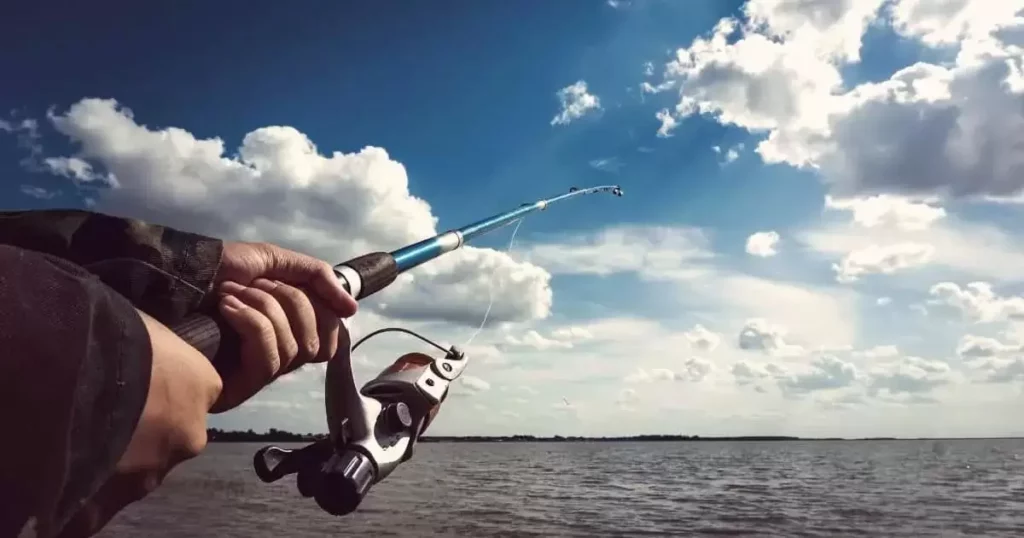
When considering baitcaster line capacity, anglers often encounter the choice between yardage and meter measurements. In simple terms, yardage refers to the length of the fishing line measured in yards, a common metric in the angling world.
On the other hand, meter measurement indicates the line length in meters, providing an alternative unit of reference for anglers worldwide. To help clarify, let’s break down the conversion: 1 yard is approximately equal to 0.9144 meters.
Quick reference table for a better grasp of the conversion:
| Yardage | Meter Measurement |
| 50 yards | 45.72 meters |
| 100 yards | 91.44 meters |
| 150 yards | 137.16 meters |
| 200 yards | 182.88 meters |
This table assists anglers in making quick and precise adjustments, allowing them to maximize the potential of their baitcaster reels with ease.
Overcapacity Issues with Baitcaster Reels
Baitcaster reels are fantastic tools, but overcapacity can lead to problems. When selecting a reel, ensure it matches your fishing needs. Overcapacity affects performance, causing casting and retrieval issues.
To prevent overcapacity pitfalls, check your reel’s specifications. Understand the recommended line capacity and match it to your fishing style. This simple step ensures your baitcaster reel operates smoothly without compromising its effectiveness on the water.
The Impact of Baitcaster Line Length on Targeting Specific Species
Selecting the right baitcaster line length significantly influences your success in targeting specific fish species. Shorter lines are ideal for precision casting in areas with obstacles, while longer lines provide the distance needed for open-water species.
Tailoring your baitcaster line to the target species ensures better control and increased chances of a successful catch. The impact of baitcaster line length goes beyond distance, it affects lure presentation and retrieval.
Different species have distinct behaviors, and using an appropriate line length allows you to mimic natural movements. Whether you’re aiming for bass in cover or chasing open-water trout, understanding the correlation between baitcaster line length and specific species behavior enhances your overall fishing strategy.
Tips and Tricks for Managing Baitcaster Line: Angler Insights
Proper Spool Tension: Adjust your baitcaster’s spool tension to prevent backlash. Begin with a loose setting and gradually tighten until the lure falls slowly.
Mind the Wind: Account for wind conditions when casting. Adjust your casting technique and consider the wind direction to avoid tangles.
Line Condition Awareness: Regularly check your baitcaster line for wear and nicks. Replace damaged sections promptly to maintain optimal performance.
Smooth Retrieval Technique: Practice a smooth and steady retrieve to minimize line twists and tangles during lure retrieval.
Balancing Act: Find the right balance between line capacity and casting distance. Overfilling can affect performance, while the insufficient line may limit your casting range.
Routine Maintenance Matters: Clean and lubricate your baitcaster regularly to ensure smooth line management. A well-maintained reel extends the life of both the line and the equipment.
Baitcaster Line Maintenance to Ensure Longevity and Reliable Performance
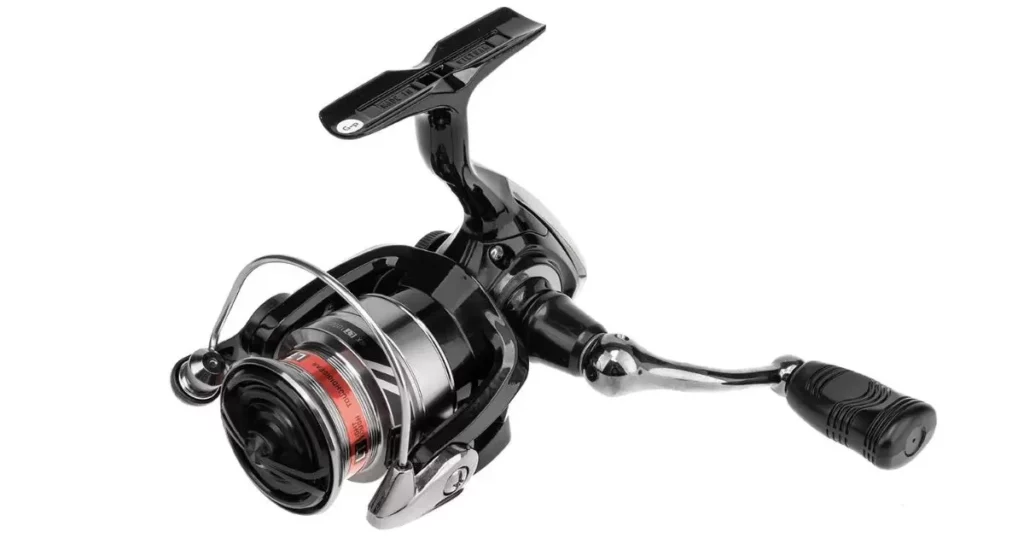
Baitcaster Line Maintenance is essential for preserving your equipment. Regularly inspect the line for wear or damage. Replace it promptly to ensure the longevity of your baitcaster.
To maintain reliable performance, clean your reel after each use. Remove debris and apply lubrication where needed. Proper care guarantees your baitcaster remains a dependable tool on every fishing expedition.
Frequently Asked Questions
How much line does a baitcaster hold?
A baitcaster’s line capacity varies, typically ranging from 80 to 200 yards, depending on the model and brand. It’s crucial to match the line capacity with your fishing needs and target species.
Is there a standard measurement for baitcaster line capacity?
Baitcaster line capacity is often measured in yards or meters. Understanding the measurement helps anglers choose the right amount of line for their specific fishing situations.
Can I use different types of fishing line with a baitcaster?
Yes, baitcasters are versatile and can handle various types of lines, including monofilament, fluorocarbon, and braided lines. The choice depends on your fishing preferences and conditions.
Does the length of the baitcaster line affect casting precision?
Absolutely. The length of the line on a baitcaster reel directly impacts casting precision. Choosing the appropriate line length contributes to accurate casts and successful angling experiences.
Conclusion
The capacity of a baitcaster is crucial for anglers seeking optimal performance. Whether choosing monofilament, fluorocarbon, or braided line, the baitcaster’s ability to hold the right amount influences casting precision and overall success.
